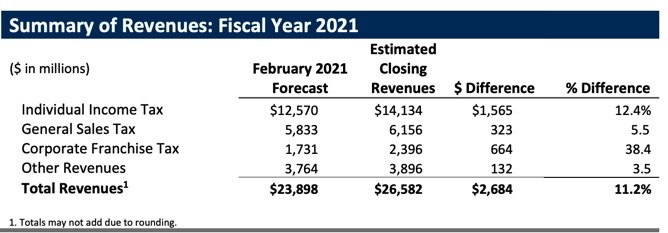Tax revenue collections continue to beat forecast
On August 10, the Minnesota Management and Budget released data showing how Minnesota tax collections fared in July. According to the data, “net general fund revenues totaled $1.307 billion in July, $67 million (5.4 percent) more than forecast.” While individual income tax collections were below forecast, revenues from sales, corporate and other taxes were above forecast.

Minnesota has had a good year of tax collections despite last year’s predictions that estimated a budget shortfall. The 2020-2021 fiscal year, for example, ended with a $2.7 billion surplus.

This trend is not exclusive to Minnesota. Numerous states have seen their tax revenue collections beat dire predictions that were made at the beginning of the pandemic.
Unlike Minnesota, however, in response to favorable tax collections, other states have taken measures to enact policy providing tax relief to taxpayers.
According to the Tax Foundation,
So far in 2021, 11 states have enacted laws to reduce their income tax rates, with various effective dates. Specifically, 10 states have enacted individual income tax rate reductions and five have enacted corporate income tax rate reductions. In many states, these rate reductions are paired with other structural improvements to their income tax base, such as consolidating brackets to create a more neutral structure, eliminating the state deduction for federal taxes paid, or conforming to the federal government’s more generous standard deduction.
Minnesota already has some of the highest tax rates in the country. With so many states enacting reform, it means we are falling further behind, and tax reform is more than necessary.
Our forecasted tax revenue surpluses should make it easier for legislators to undertake reform.